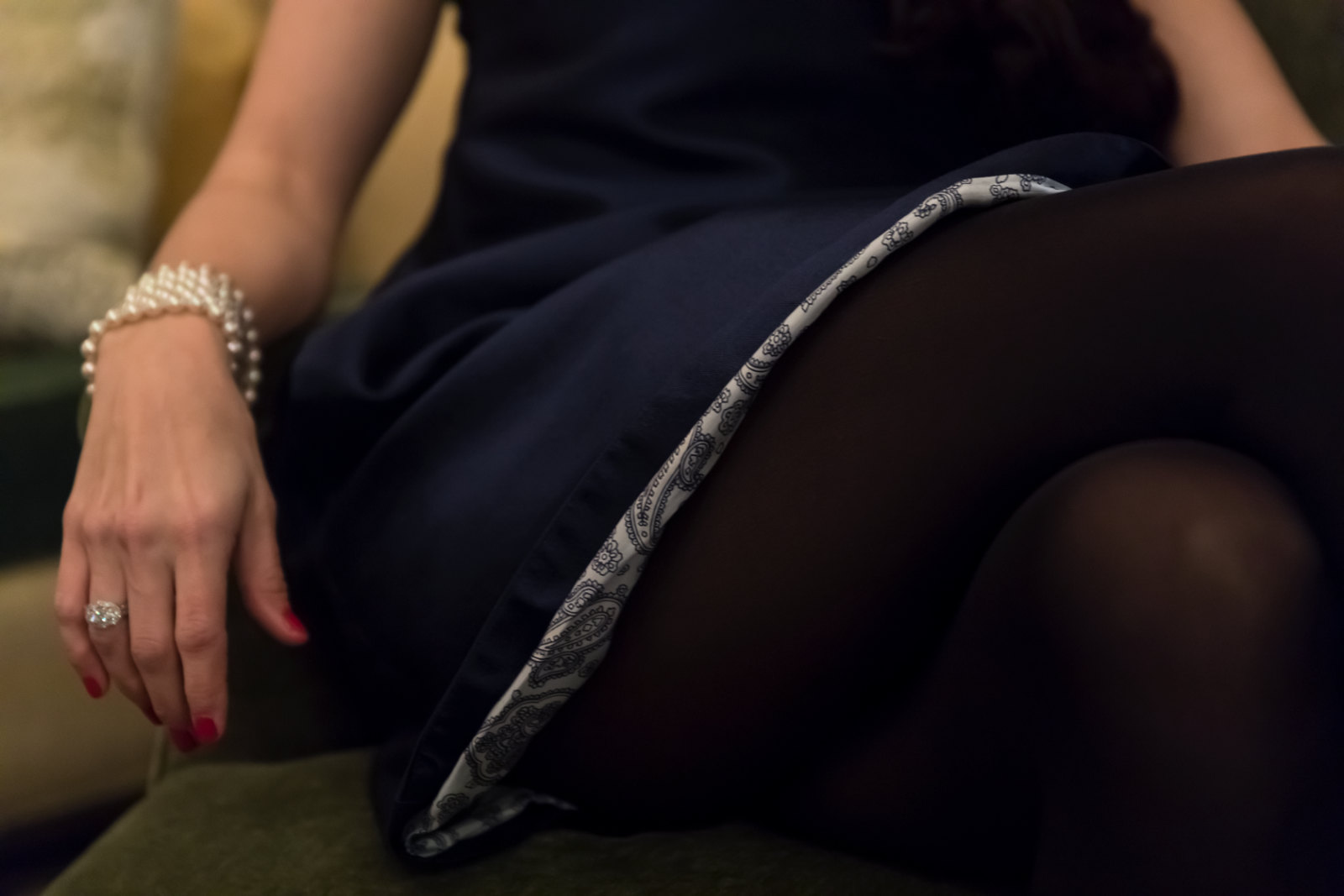
Senza Tempo’s attention to detail includes silk linings.
FASHION Senza Tempo creates fashion that is timeless and not caught up in gimmicks or trends. Jack Yan talks to its founder and creative director, Kristen Fanarakis, and discovers a unique and considered approach to fashion design
From issue 47 of Lucire
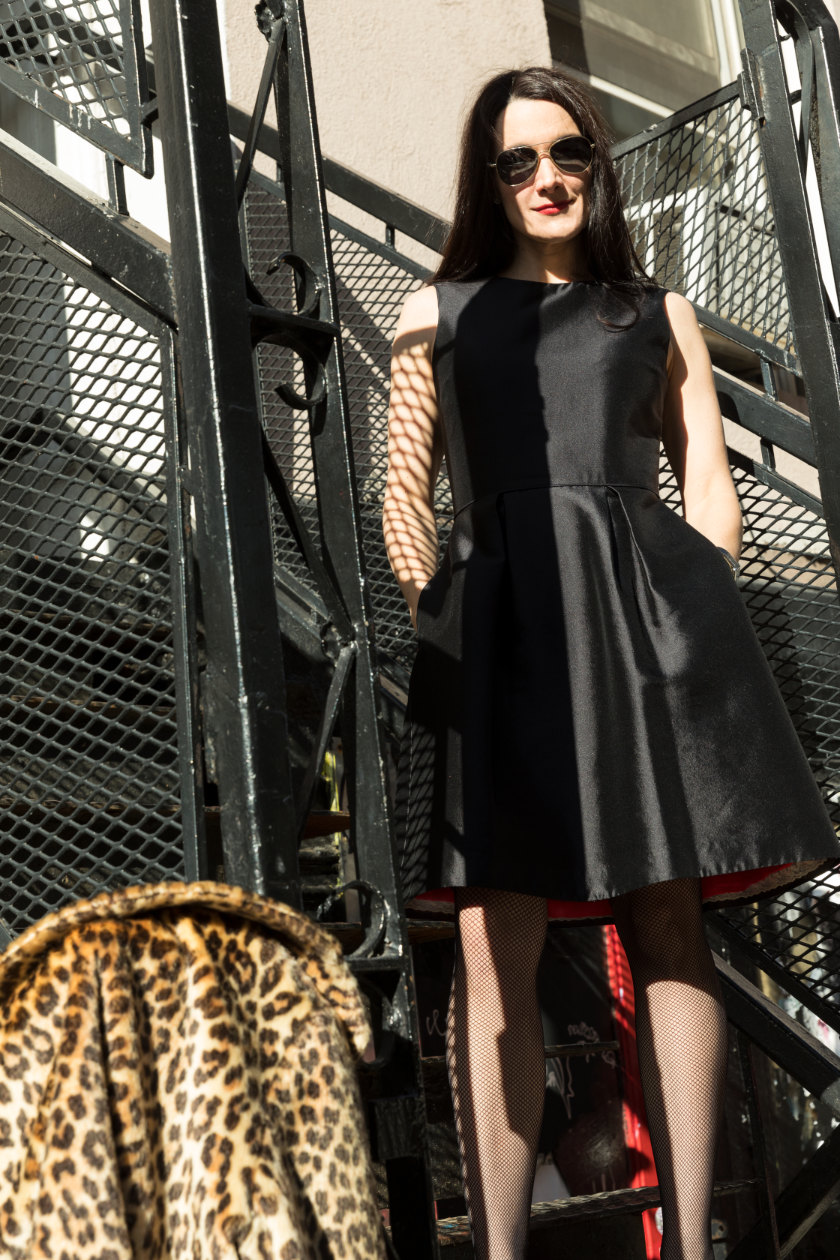
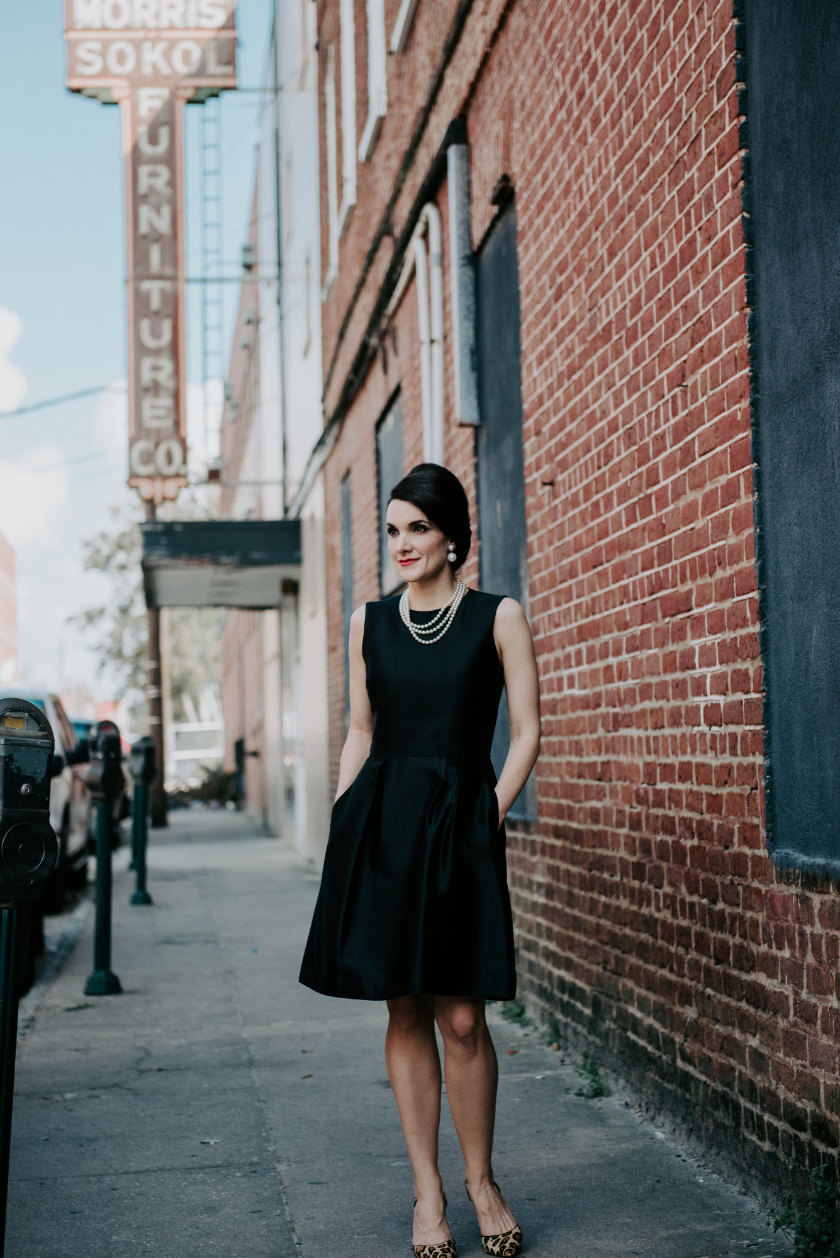

Senza Tempo’s philosophy makes perfect sense for our times. The company has several principles: its fashion is timeless, sustainable and quality. It proudly proclaims to be made in the USA, stressing that its craftsmanship and quality speak for themselves. A fourth pillar states that ‘slow fashion is sustainable fashion’: the best way, the company believes, to be truly sustainable is to produce less. ‘Buying less and buying better is the only way to shop sustainably,’ states the website.
Senza Tempo is one of the few brands to place this idea front and centre—to have such quality and timelessness the clothes can last for decades. It’s backed up by statistics: ‘Designers produced only two collections a year because clothing generally reflected the true cost of production, so clothing was relatively expensive. It comprised around 20 per cent of disposable income after WWII. Today it’s less than 3 per cent even though the average consumer buys ten times as much.’ Fuelling this has been a race to the bottom with wages, with quality suffering as a result, as well as workers’ welfare. Keeping things Stateside, while aiming for domestic sales, ensures high-quality production and a reduction in carbon emissions from freight.
It’s impossible to arrive at such a comprehensive set of values without deep thought, and Senza Tempo’s founder and creative director, Kristen Fanarakis, understands the role of fashion, the industry’s ethics, the supply chain, and the overall business better than most. She takes a far longer-term view on design than virtually every designer working today.
Her history probably informed this distinctive approach: rather than studying a fashion design course, Fanarakis studied economics, concentrating on public finance, as well as political science at the University of North Carolina–Chapel Hill. She then went on to do a master’s in international business and earned an MBA after her career on Wall Street, working in foreign exchange.
Fanarakis reflects, ‘My Wall Street and investment management career in Boston consisted of working from one crisis to another. I started my career at the height of the dot-com craze in 1998, survived that bubble deflation, then came 9-11 and the Enron scandal which created more market turmoil, a few firm-specific financial scandals, and then it was all capped off by the 2008 financial crisis.
‘The first ten years of my career after graduating college were incredibly volatile and I didn’t always work for the nicest people—it made me tough, but it also inspired a desire to do something different.’
That period also taught Fanarakis to see the world and markets from a macro perspective.
Fashion, however, wasn’t completely foreign to Fanarakis. Her mother and grandmother instilled in her an appreciation of quality from a young age. Even though they didn’t have a lot of money, they understood quality, and taught Fanarakis what to look for. ‘From an early age I was taught that it’s not about the logo or the price. They also both really hated synthetics and how the fabrics felt.’
She watched old movies with her grandmother and developed a love of vintage and classic fashion. ‘I always remember her telling me: buy the best you can afford and make it last. She thought it was better to save your money and buy one tier above what’s immediately accessible price-wise and learn to take care of what you own. It’s probably a factor of growing up in the Depression and then WWII—you had to make things last. Waste or underutilizing clothes or anything really was practically a sin.’ When you cannot afford a new wardrobe constantly, then it’s better to go with more timeless styles. You then ‘amortize the cost of the item by wearing it frequently and for many years,’ explains Fanarakis.
She also recalls an incident when working at the Gap during her high school years: ‘[I] remember the executives from Sara Lee, which owned Hanes at the time, coming in to buy socks that were made at the factory nearby to “check the quality”. They visited all the stores they supplied at the time to do this. I was 16 and never forgot this very brief interaction.’
By 2013, when she began drawing up plans for her label, she knew it had to be sustainable. However, she came at it from a different angle: ‘Economists and people who work in financial markets often talk about how markets “overshoot” or become overbought or oversold—which is really just market-speak for too many people jumping on a trend and so there is an expectation that that market will normalize by correcting or reverting to the mean.’
She recalls the offshoring that happened in the 1990s when she was at high school and college, and how it decimated North Carolina’s textile industry.
‘If we think about the trends in fashion that have dominated the last 10–20 years: offshoring to the lowest-cost providers, declining quality, increasing volumes of production and the speeding up of the cycle. We’ve definitely gone too far on all of those fronts.
‘The brand’s business model, æsthetic and philosophy are sustainable by default, not artificial design, because it’s about creating clothing and consuming the way we used to consume. Classic and quality fashion is naturally sustainable fashion. There wasn’t a sustainable and unsustainable fashion industry even thirty years ago.’
Fanarakis’s label, then had to focus on quality, classic design and tailoring, on the sort of clothing she wanted to buy but increasingly found she couldn’t. It was ‘an opportunity to create a nice, traditional luxury brand that focused on classic styles and quality for women,’ she says.
She also was not interested in doing something outlandish for the sake of media attention or social media. ‘I was the time-starved consumer who didn’t have time or want to spend so much time finding something simple and well made.’
Fanarakis adds, ‘I also wanted it to be an American-made brand. I often talk about how buying domestically made products naturally lowers the carbon footprint or how it bolsters the economy through the economic multiplier effect. Producing domestically was as much of an emotional desire as an economic one. It’s extremely hard, but it was an integral part of how I think about sustainability and how I wanted to operate.’
Having these principles in place meant that Fanarakis was less susceptible to gimmicks, which she believes places her out of sync with the rest of the industry. She also sees fashion through more of a data lens and, indeed, more of a rational one: ‘For example, I often talk about how we don’t need to have more certifications in order to be more sustainable, but we need to revert back to old ways of production and consumption. It’s not like there was a change in certification standards that helped create the mess we have in fashion today.
‘Quality used to be standard, but now it’s the exception. The quality, even middle-market, mall brands offered would be considered a luxury today. Now there were certifications such as the International Ladies Garment Worker Union in the US and the Utility Scheme in the UK from around WWII into the ’50s, but those certifications have long passed.’
The next step was finding a factory who could make clothing to Fanarakis’s standards, with in-built quality control. There had to be a level of vertical integration: that pattern-making, cutting, sample-sewing and production had to be done by the same team. Without prior experience in the sector, she came to realize this was not how the industry was set up; and what she eventually found was a luxury atelier in Los Angeles.
continued below
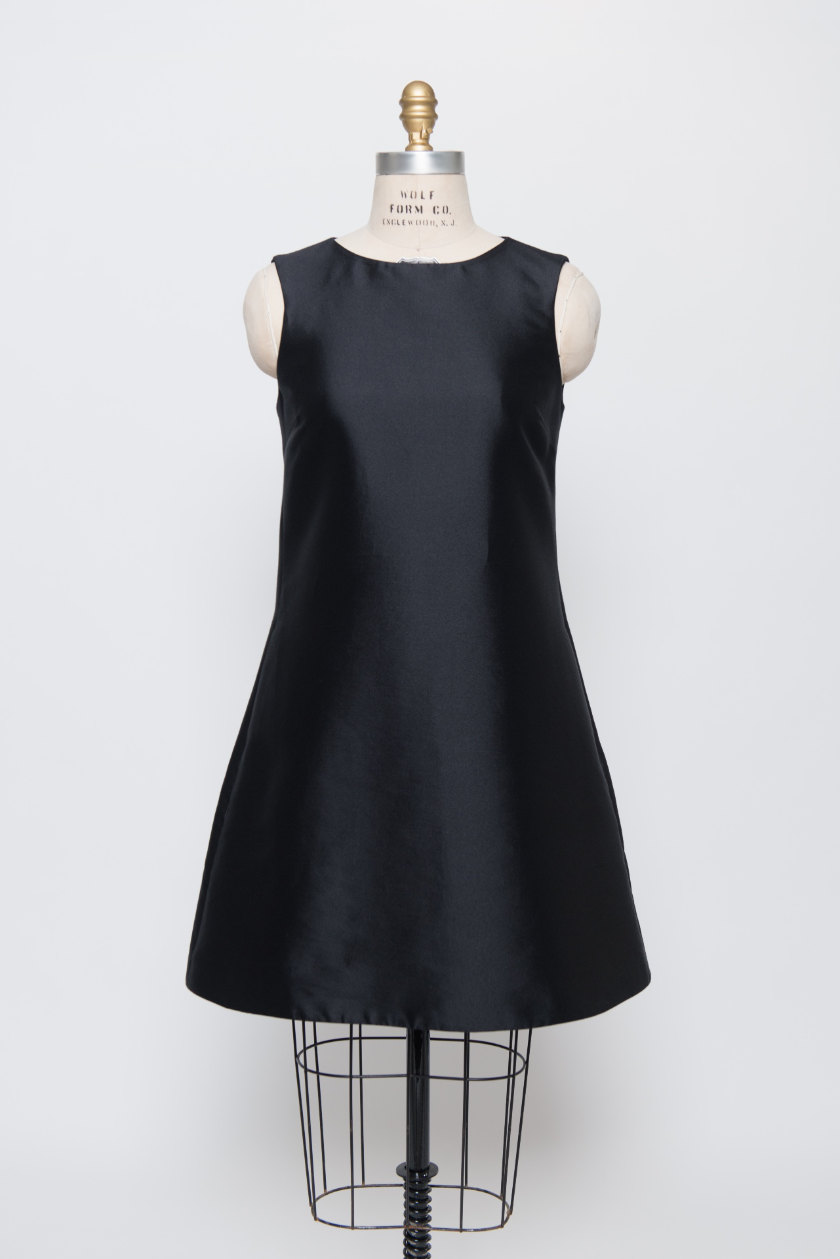
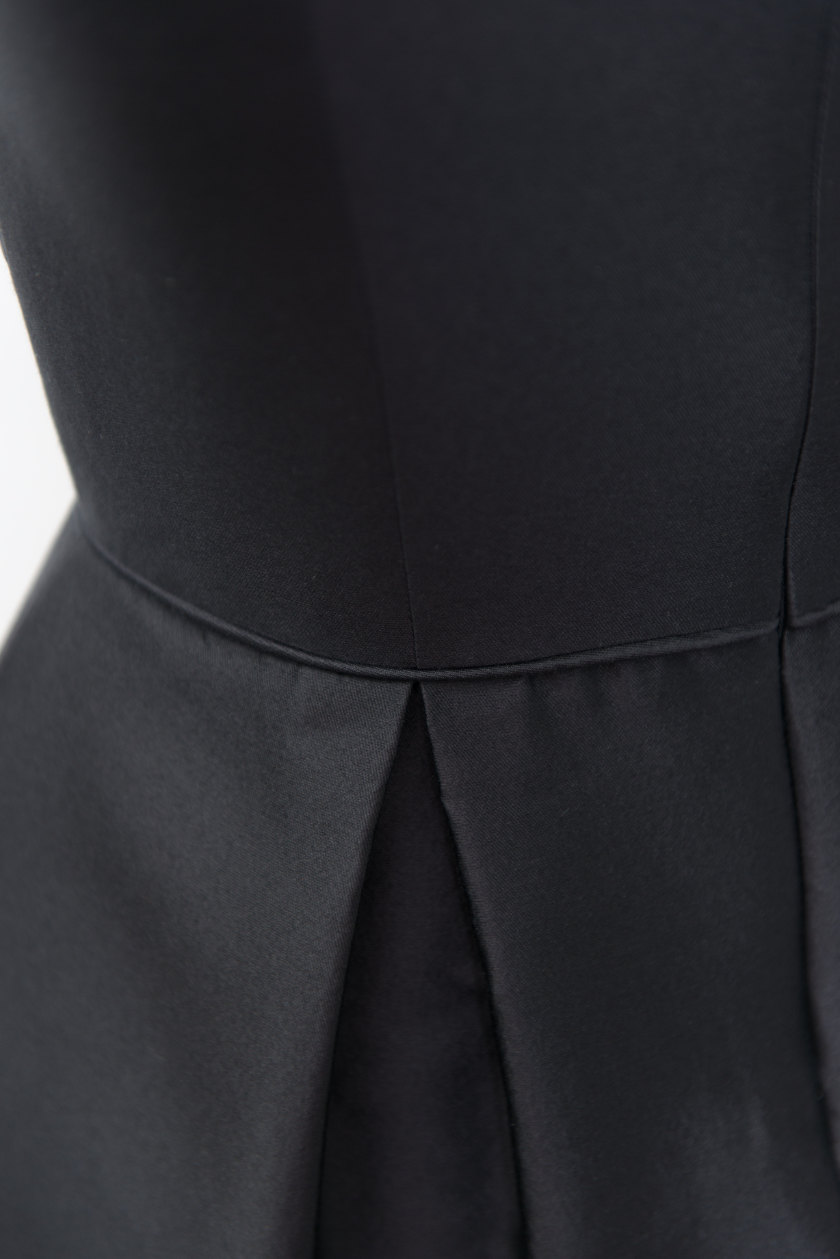
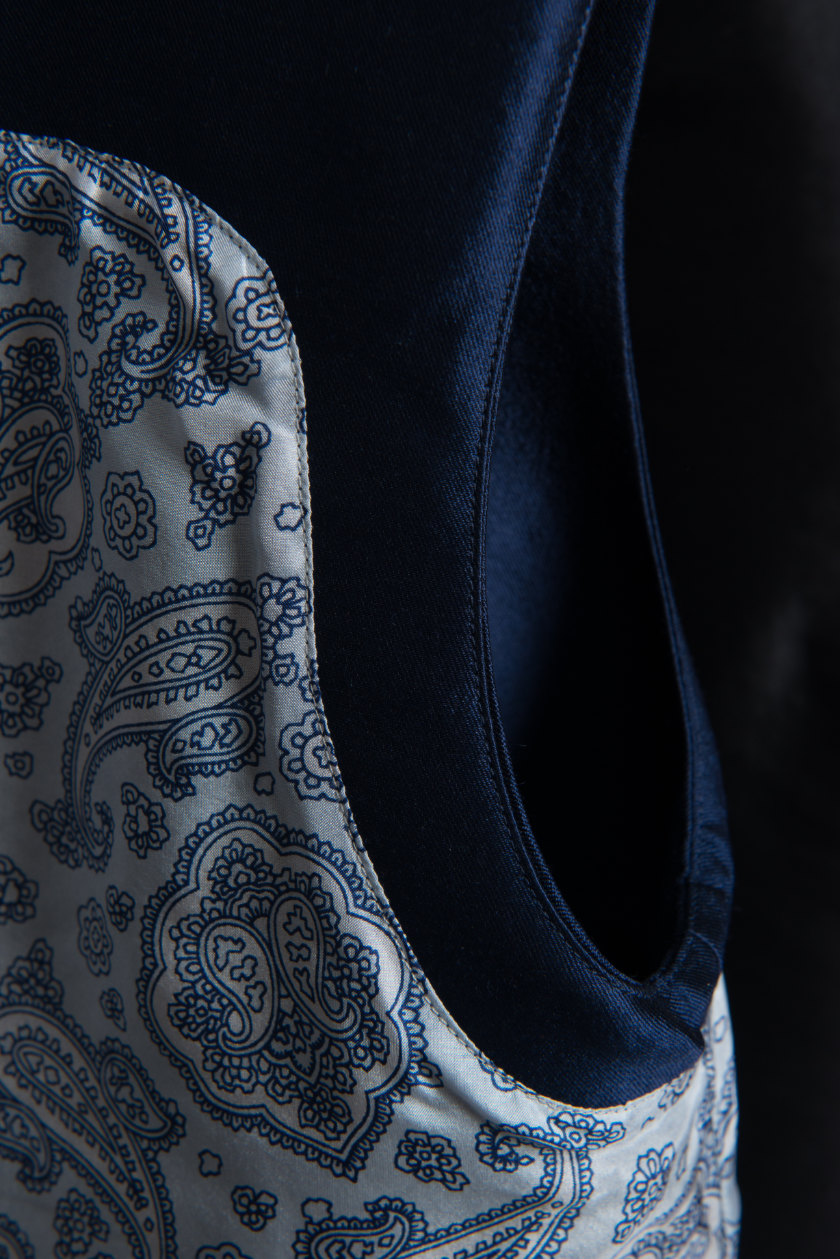
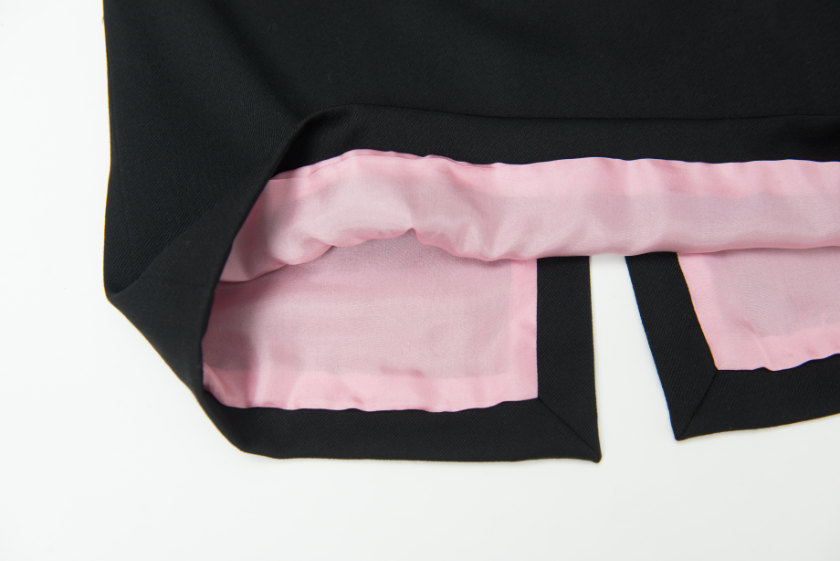
Above, from top: Senza Tempo’s vintage-inspired dress has a modern style, and fit and flare. Close-ups of the piping, silk lining, and hem detail.
She was also doing it alone, without outside investors, but it meant she could run things on her own terms. ‘The check-the-block approach to sustainability by using recycled or organic fabrics, becoming a B Corp (a designation that doesn’t have legal merit), etc. has become so prevalent in the “sustainable brands” space it’s cliché.
‘Not giving into these things is very hard. Being an anti-trend fashion brand focused on quality and craftsmanship, things that aren’t even valued by many of the traditional luxury brands now, is an ongoing challenge but an area I simply won’t compromise.’
When explained in such clear terms, Senza Tempo’s approach makes absolute sense, making you wonder why more brands don’t pursue a similar strategy. Creating what Fanarakis calls ‘classically inspired workwear and refined casual wear for the woman who believes that elegance is always in style’, Senza Tempo, conceived 10 years ago, counts as its most common feedback: ‘It’s so hard to find clothing like yours.’
Those hard-to-find, yet staple, items in can be found in Senza Tempo’s range, such as the Carmel, a simple black fit-and-flare dress, or the Diana, a classic pleated A-line skirt with hidden pockets. ‘These are wardrobe staples for many women—just like jeans and T-shirts,’ says Fanarakis. She also points to Senza Tempo’s Lawson dresses, which she describes as pared-down versions of the 1958 Dior trapeze dress by Yves Saint Laurent. The Lawson is her favourite dress, thanks to its comfort and versatility, suitable for everything from dinners to conferences. Similarly versatile are her Marilyn T-shirts, using silk jersey.
‘I try to create items that will endure in a closet. I’d love for clients to wear my items weekly or monthly, but some are more like occasion-wear like the Jackie I or Lawson cocktail dress. What I want is those items to always survive a closet clean-out because they feel like they can always wear it again. Even when things like the silk Ts I make get stained, they can still be used to layer or as pyjamas,’ she says.
She says she designs items as canvases on which women can express their own style. Her customer is a woman who knows her own personal style and what quality is.
Senza Tempo’s timelessness comes from Fanarakis’s research into vintage fashion from films and TV shows. ‘I think: would I still want to wear that style? I always think: was this style in style 15 or 50 years ago, and will it still be in style 15 or 50 years hence?’ This is the time horizon that Fanarakis designs for: not a season or a year. The aim is to remain in style for 15 to 50 years.
‘I do think proportion and tailoring play a big role when it comes to creating a timeless garment. A great example is if you look at Marlene Dietrich’s or Katharine Hepburn’s suiting. They wore clothing tailored perfectly and proportionately for their frames. If you didn’t know who they were, it would be hard to date their outfits.
‘The New Look fit and flare styles date to the post-WWII era and the 1950s, but never really went out of style. Same with the cropped boxy style blazer like the Natalie—that silhouette has been popular since Chanel popularized it in the ’20s and is largely unchanged. The only thing that changes over the years are the fabric and trims.’
There is still room for innovation. Senza Tempo’s Maggie and Debra tunics and the Helen shirt dress are borne from Fanarakis’s desire to do simple white shirts, but she did not want to follow the pack by doing a button-down style. The tunics appear to have buttons hidden behind a placket—but being tunics, there aren’t any.
The quality is built in from the start: choosing the right fabric (silk wool, or a Swiss-made extra-long staple cotton pique); having the highest stitch count where possible or binding the hems with fabric. Senza Tempo has generous seam allowances of 1 to 1½ inches (2·5 to 3·8 cm) in lined garments in case one gains a few kilos; and simple lines to make those alterations easy—which Fanarakis says is actually time-consuming to design, ‘because you can’t hide errors. If you have ruffles or folds, or even really oversized designs which are quite popular today, it hides bad fit.’
What’s next are potentially knits. Fanarakis says she has been obsessed with merino wool, and currently she is educating herself on the construction and techniques. She is cognizant that whatever she designs has to complement her existing collection.
Fanarakis has an even more powerful reminder about the power of good design, which she follows for her label: ‘I always say: no one ever looked at a photo of Jackie Kennedy or Audrey Hepburn and thought, “What was she thinking wearing that outfit?”’ •
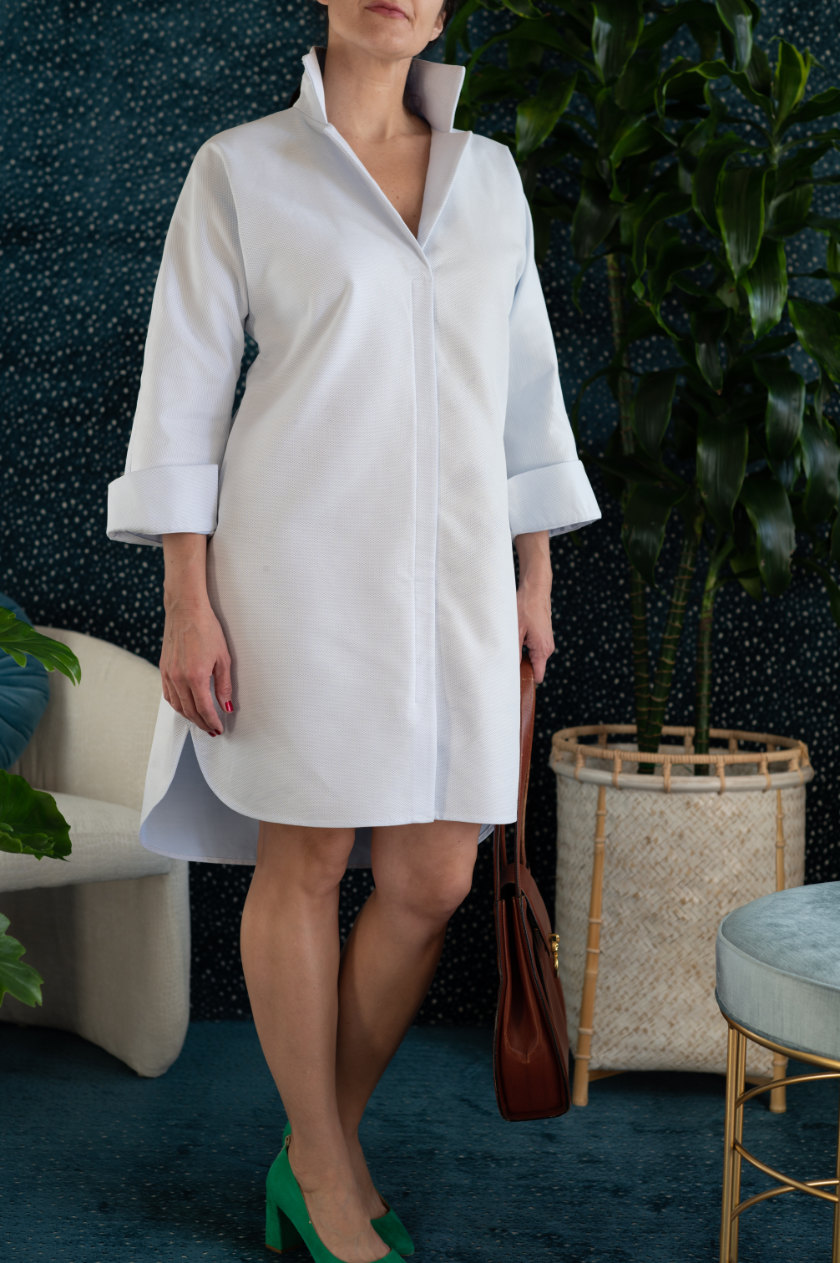
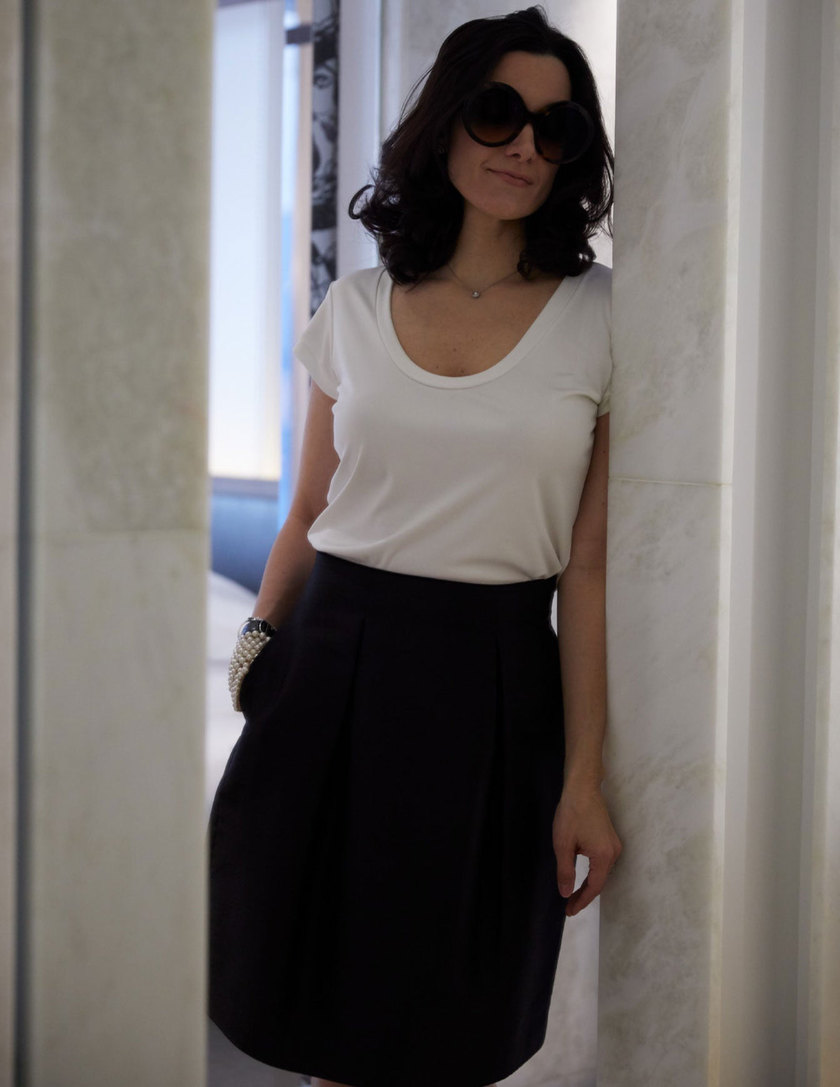
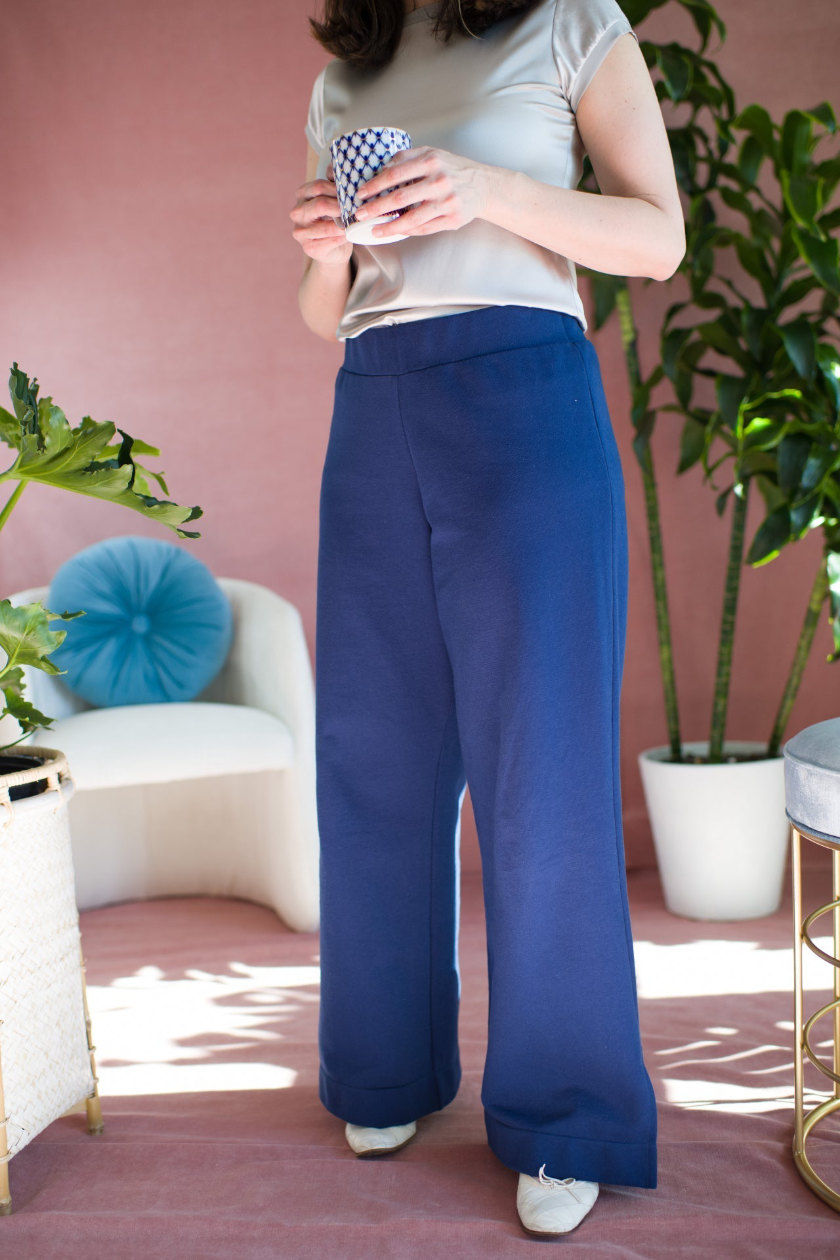
Jack Yan is founder and publisher of Lucire.
Related articles hand-picked by our editors
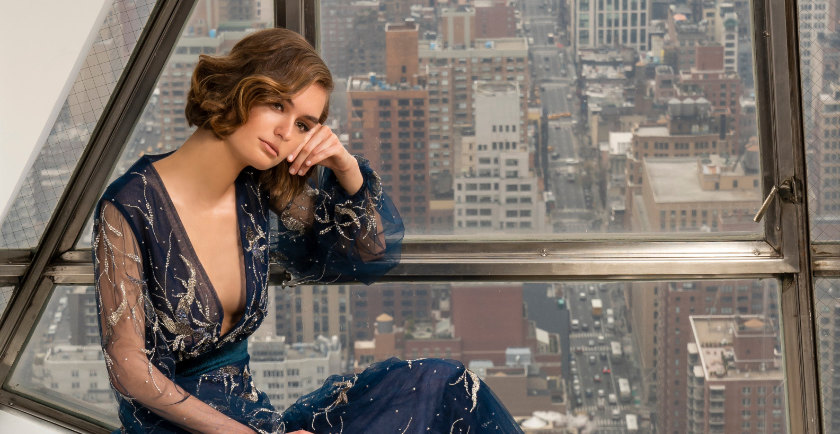
Allowing the magic to happen
Permettre à la magie d’opérer
Starting the same year as Lucire, Reem Acra commemorates 25 years since she began her label. Jack Yan interviews her
La même année que Lucire, Reem Acra commémore les 25 ans de la création de son label. Jack Yan s’entretient avec elle
From issue 46 of Lucire
Dans le numéro du janvier 2023 de Lucire KSA

Rebel with social causes
A former US Marine who learned to use an industrial sewing machine when he was five years old, Uriel Saenz has not had the typical career trajectory of many fashion names. Yet he has undeniably found success, shown in cities around the world, and proudly promotes social issues that are close to him. Jack Yan interviews the Los Angeles-based designer
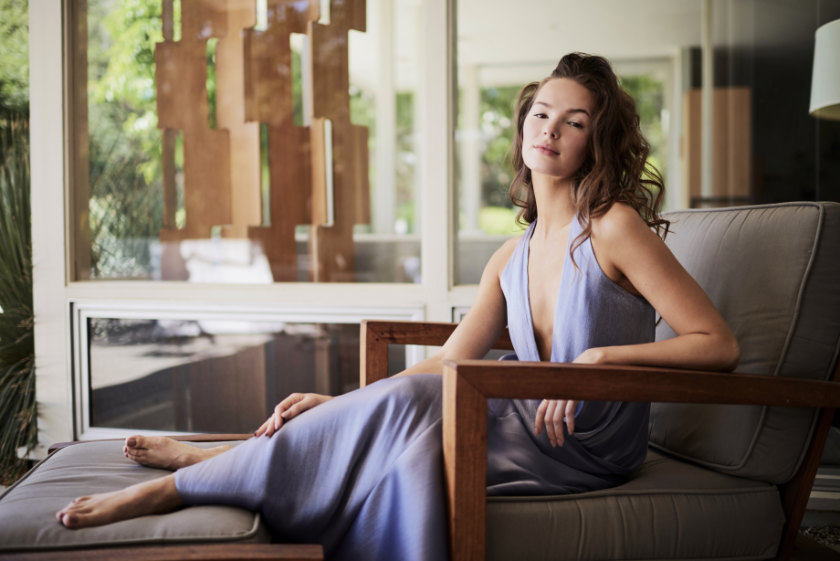
Out of the spotlight
Loin des feux de la rampe
There is nothing that Los Angeles-based designer Peter Cohen wants more than knowing his clients shine, feeling fabulous and confident wearing his work
Il n’y a rien que le designer Peter Cohen, basé à Los Angeles, désire plus que de savoir que ses clients brillent, se sentent fabuleux et confiants en portant son travail
First published in the September 2022 issue of Lucire KSA
Dans le numéro du septembre 2022 de Lucire KSA